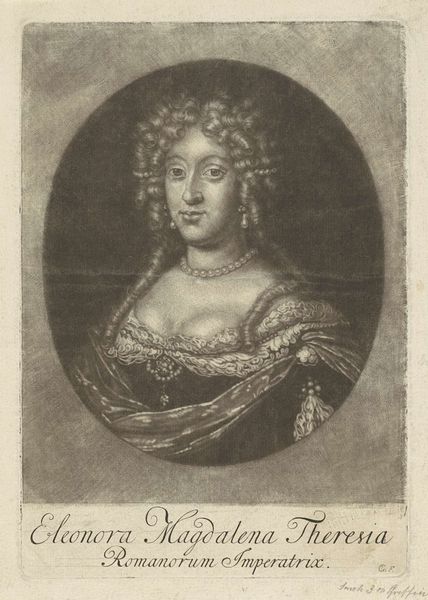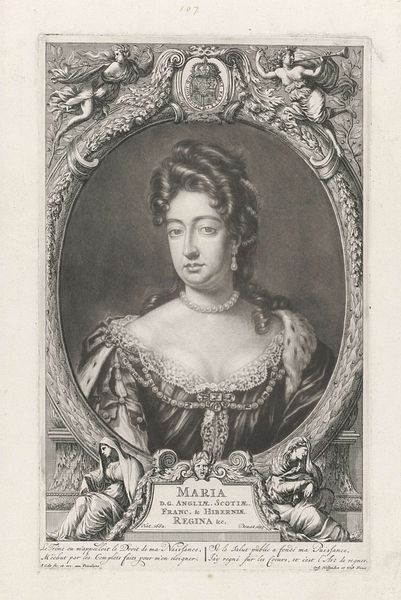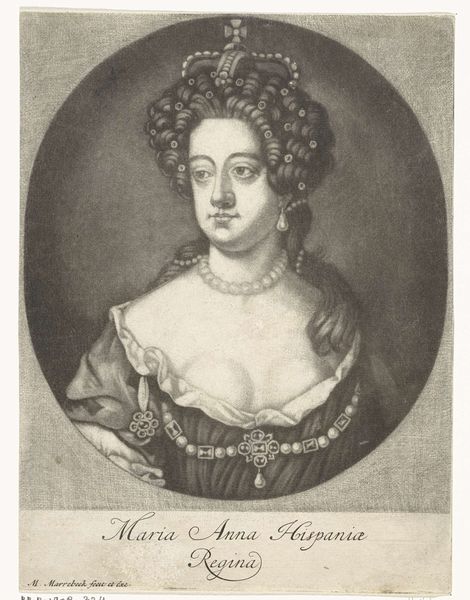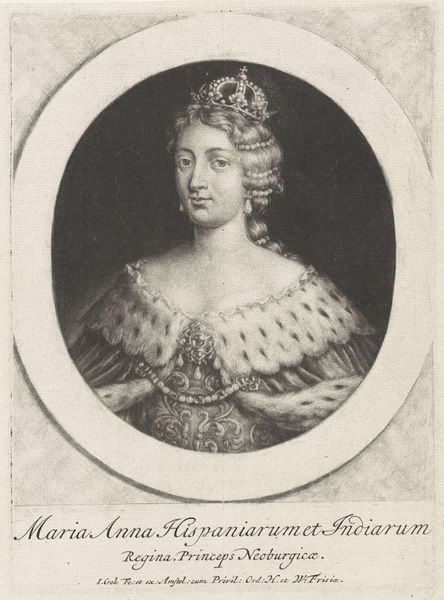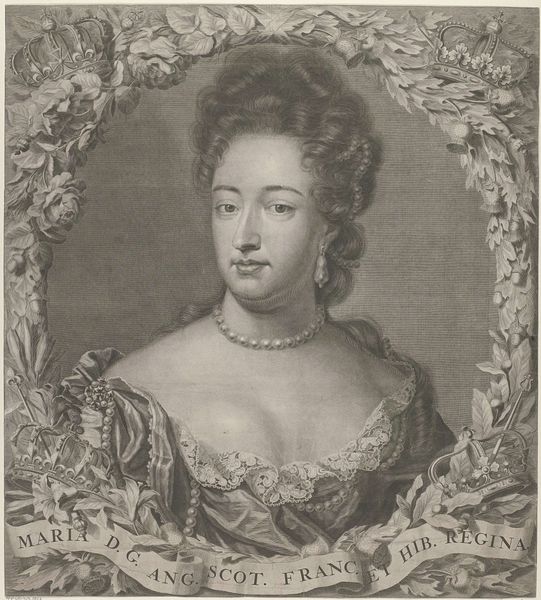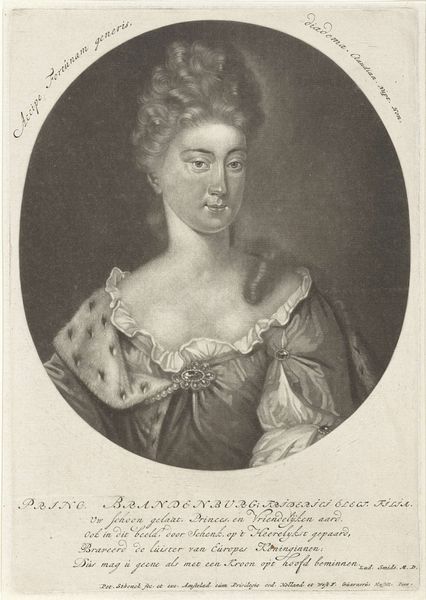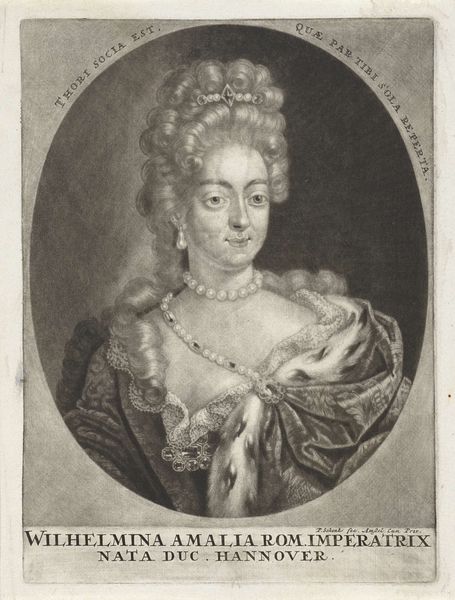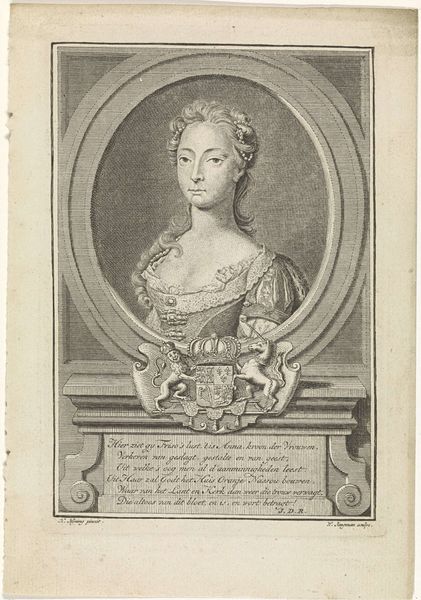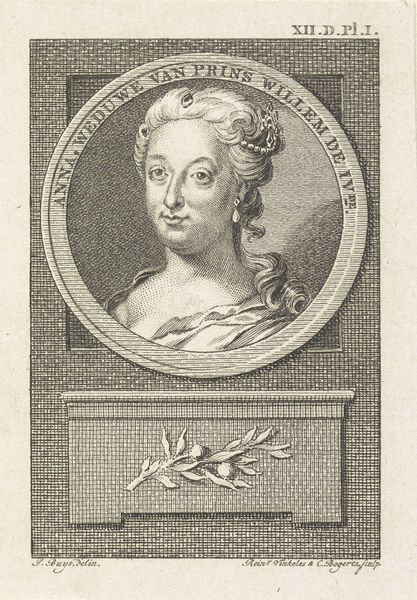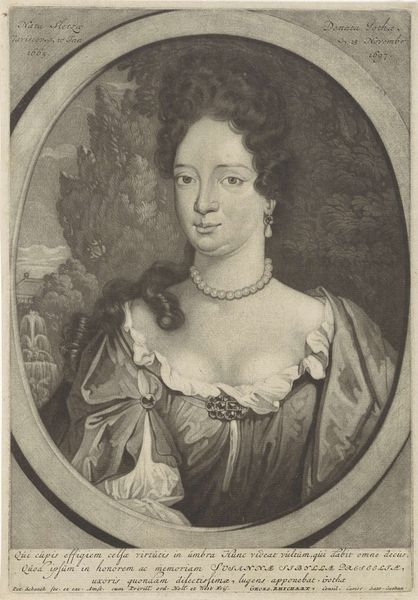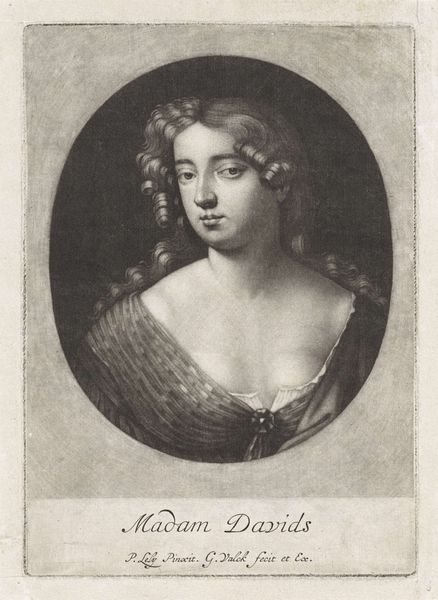
Dimensions: height 229 mm, width 130 mm
Copyright: Rijks Museum: Open Domain
Curator: This is a rather charming engraving of Anna, Princess of Orange Nassau, dating from somewhere between 1783 and 1851. What strikes you about it initially? Editor: It's got an appealing delicacy, a softness. I am curious about how it was produced, because the subtle shading gives the impression of delicate fabrics rendered with an expert touch. Curator: Engravings like this were meticulously produced through the careful labor of etching lines into a metal plate, which was then inked and pressed onto paper. The result being the subtle light and shadow defining her status, of course, since representation through engravings provided the Dutch with a form of popular culture in lieu of attending operas and other aristocratic entertainments elsewhere. Consider her role as Governess during a tumultuous period; does this portrait flatter or probe? Editor: So the technique and dissemination process, making these aristocratic images accessible! What does the labor and means of reproducing them say about ideas surrounding the subject of Anna’s role as royalty? The details are what draw the eye: her pearls, the cut of her dress, the wisps of hair escaping her coiffure... The materiality feels significant, almost staged for a market of its own. Curator: Yes, the very materiality is interesting as this image carries both the markers of her elevated rank, and is something anyone could consume or have. The way her social identity is performed speaks to larger structures of gender, power and status during that time. Anna’s image is strategically constructed through printmaking techniques, circulating power. The print makes accessible someone who was inaccessible, making Anna, Princess of Orange Nassau accessible to many who otherwise would not be able to see her likeness. Editor: The labor inherent in this creation and consumption becomes such a critical point here—that reproducibility shifts Anna into both representation and a commodity to be had. Thinking of that social shift inherent in reproducing it… What do you suppose audiences thought of seeing a leader depicted in these new and widening social ways? Curator: No doubt there were varying opinions on seeing someone with status being something they can reproduce or see, rather than never see and thus retain all of its awe and sacredness. I appreciate your take on labor here, it really opens new perspectives onto how power worked during the age. Editor: Thank you. Exploring art this way helps us think critically about the complex processes of art production, while keeping her impact relevant in art historical dialogue.
Comments
No comments
Be the first to comment and join the conversation on the ultimate creative platform.
